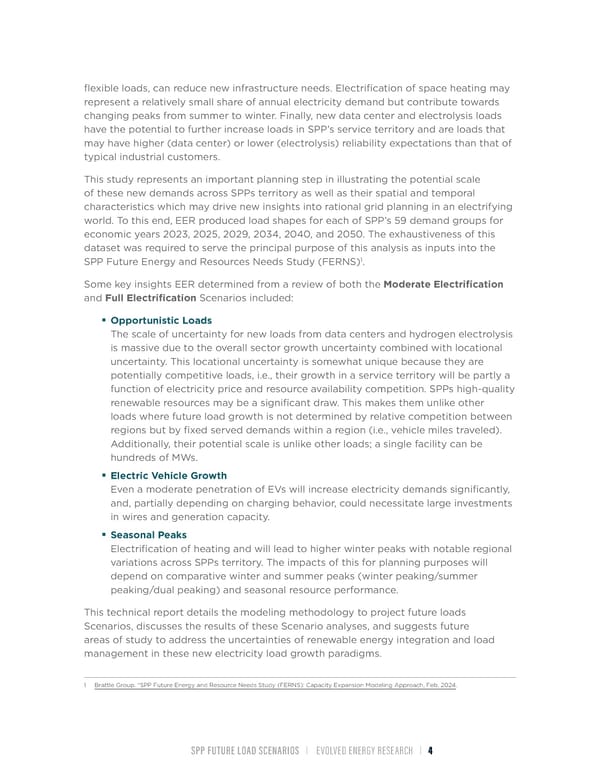flexible loads, can reduce new infrastructure needs. Electrification of space heating may represent a relatively small share of annual electricity demand but contribute towards changing peaks from summer to winter. Finally, new data center and electrolysis loads have the potential to further increase loads in SPP’s service territory and are loads that may have higher (data center) or lower (electrolysis) reliability expectations than that of typical industrial customers. This study represents an important planning step in illustrating the potential scale of these new demands across SPPs territory as well as their spatial and temporal characteristics which may drive new insights into rational grid planning in an electrifying world. To this end, EER produced load shapes for each of SPP’s 59 demand groups for economic years 2023, 2025, 2029, 2034, 2040, and 2050. The exhaustiveness of this dataset was required to serve the principal purpose of this analysis as inputs into the 1 SPP Future Energy and Resources Needs Study (FERNS). Some key insights EER determined from a review of both the Moderate Electrification and Full Electrification Scenarios included: ƒ Opportunistic Loads The scale of uncertainty for new loads from data centers and hydrogen electrolysis is massive due to the overall sector growth uncertainty combined with locational uncertainty. This locational uncertainty is somewhat unique because they are potentially competitive loads, i.e., their growth in a service territory will be partly a function of electricity price and resource availability competition. SPPs high-quality renewable resources may be a significant draw. This makes them unlike other loads where future load growth is not determined by relative competition between regions but by fixed served demands within a region (i.e., vehicle miles traveled). Additionally, their potential scale is unlike other loads; a single facility can be hundreds of MWs. ƒ Electric Vehicle Growth Even a moderate penetration of EVs will increase electricity demands significantly, and, partially depending on charging behavior, could necessitate large investments in wires and generation capacity. ƒ Seasonal Peaks Electrification of heating and will lead to higher winter peaks with notable regional variations across SPPs territory. The impacts of this for planning purposes will depend on comparative winter and summer peaks (winter peaking/summer peaking/dual peaking) and seasonal resource performance. This technical report details the modeling methodology to project future loads Scenarios, discusses the results of these Scenario analyses, and suggests future areas of study to address the uncertainties of renewable energy integration and load management in these new electricity load growth paradigms. 1 Brattle Group. “SPP Future Energy and Resource Needs Study (FERNS): Capacity Expansion Modeling Approach, Feb. 2024. SPP FUTURE LOAD SCENARIOS | EVOLVED ENERGY RESEARCH | 4
 Future Load Scenarios for Southwest Power Pool Page 5 Page 7
Future Load Scenarios for Southwest Power Pool Page 5 Page 7